Garrattfan's Modelrailroading Pages

NS 3700 class
4-6-0 comparison
As I was writing a brief history of the 3700 class I felt the urge to compare the 4-6-0 classes in the Netherlands so I decided to dedicate a separate page to it. I also included the 3700 tank versions (classes 6000 and 6100) and three classes from abroad: the GWR King, LMS Black Five and the German P8. Of course any comparison is incomplete by its nature but it is just intended as an impression, no more.
A pictorial introduction of the classes
3500I |
|||
| Built: 8 | In service: 1908-1920 | Last out of service: 1946 | Preserved: None |
3500II |
|||
| Built: 49, 22 to NS | In service: 1907-1915, 1946 NS |
Last out of service: 1952 NS | Preserved: None |
3505 in Zwolle between 1946 and 1952. Source: ©Collection Het Utrechts Archief, Catalogue number 151468 |
|||
3600 |
|||
| Built: 8 | In service: 1910-1914 | Last out of service: 1953 | Preserved: None |
NCS nr 71 (later NS 3601) probably between 1915-1920 (brown livery). |
|||
3700 |
|||
| Built: 120 | In service: 1910-1928 | Last out of service: 1957 | Preserved: 1 |
Builder's photo Werkspoor 1912. Source: ©Collection Het Utrechts Archief, Catalogue number 808476 |
|||
3900 |
|||
| Built: 32 | In service: 1929-1930 | Last out of service: 1957 | Preserved: None |
Builder's photo Henschel 1930. Source: ©Collection Het Utrechts Archief, Catalogue number 151494 |
|||
4000 |
|||
| Built: 15 | In service: 1945-1946 | Last out of service: 1956 | Preserved: None |
Builder's photo NOHAB 1945. Source: ©Collection Het Utrechts Archief, Catalogue number 151455 |
|||
6000 |
|||
| Built: 26 | In service: 1913-1916 | Last out of service: 1957 | Preserved: None |
Builder's photo Beyer Peacock 1913. Source: ©Collection Het Utrechts Archief, Catalogue number 151429 |
|||
6100 |
|||
| Built: 10 | In service: 1929 | Last out of service: 1957 | Preserved: None |
Builder's photo Werkspoor 1929. Source: ©Collection Het Utrechts Archief, Catalogue number 163261 |
|||
GWR 6000 class "King" |
|||
| Built: 31 | In service: 1927-1930 (+1 in 1936) |
Last out of service: 1962 | Preserved: 3 |
King Edward II at Didcot Railway Centre 2014. ©René F. Vink 2017 |
|||
LMS Black Five |
|||
| Built: 842 | In service: 1934-1951 | Last out of service: 1968 | Preserved: 18 |
"Black Five" 45231 speeding along the Settle-Carlisle at Helwith Bridge. ©René F. Vink 2017 |
|||
German BR 38 (ex-P8) |
|||
| Built: 3946 | In service: 1906-1930 | Last out of service: 1974 (Germany) | Preserved: appr. 18 |
P8 2412 in the Linke Hoffmann Busch museum in Salzgitter (not publicly accessible). ©René F. Vink 2017 |
|||
Table of main dimensions
| Subject | 3500I | 3500II | 3600 | 3700 | 3900 | 4000 | 6000 | 6100 | King | B5 | P8 |
|---|---|---|---|---|---|---|---|---|---|---|---|
| Wheel arrangement | 4-6-0 | 4-6-0 | 4-6-0 | 4-6-0 | 4-6-0 | 4-6-0 | 4-6-4 | 4-6-4 | 4-6-0 | 4-6-0 | 4-6-0 |
| Grate area (m2) | 2.60 | 2.80 | 2.84 | 2.84 | 3.16 | 3.25 | 2.04 | 2.84 | 3.19 | 2.58 | 2.64 |
| Heated area firebox (m2) | 13.5 | 15.3 | 16 | 15 | 17 | 14.5 | 13 | 15 | 18 | 16 | 14.6 |
| Heated area tubes (m2) | 95 | 135.7 | 140 | 130 | 150 | 147 | 108 | 130 | 187 | 137 | 136.6 |
| Heated area superheater (m2) | 34 | 42.4 | 83.5 | 41 | 53 | 50 | 34 | 41 | 29 | 34 | 54.3 |
| Boiler pressure (bar) | 14 | 14 | 12 | 12 | 14 | 12 | 12 | 12 | 17 | 15 | 12 |
| Cyls | 2 | 2hp 2lp | 4 | 4 | 4 | 3 | 2 | 4 | 4 | 2 | 2 |
| Cylinder diameter (mm) | 510 | 425hp 630lp |
400 | 400 | 420 | 500 | 508 | 420 | 413 | 470 | 575 |
| Driver diameter (mm) | 1,980 | 1,780 | 1,900 | 1,850 | 1,850 | 1,890 | 1,850 | 1,850 | 1,981 | 1,829 | 1,750 |
| Water (m3) | 15.9 | 18 | 20 | 18 | 28 | 22.5 | 9 | 12 | 18 | 18 | 21.5 |
| Coal (tons) | 5 | 7 | 5 | 6 | 6 | 7 | 3 | 4 | 6 | 9 | 7 |
| Axle load (tons) | 16.0 | 16 | 18 | 22.9 | 21 | 17.7 | |||||
| Weight loco and tender, operational (tons) |
100 | 111 | 118 | 115 | 147 | 137 | 93 | 108 | 142 | 73+? | 128 |
| Length (mm) | 17,881 | 18,740 | 19,867 | 19,700 | 20,410 | 20,775 | 14,625 | 16,300 | 20,780 | 19,400 | 18,590 |
| Top speed (km/h) | 100 | 100 | 110 | 110 | 110 | 120 | 100 | 110 | 120 | 100 | |
| Tractive effort (kgf) | 8,130 | 14,390 | 9,250 | 9,590 | 12,330 | 11,000 | 7,730 | 9,950 | 15,057 (18,284) |
9,508 (11,546) |
10,000 |
Remarks
- variations within a class are possible due to engineering changes over the span of delivery or due to different builders. I tried to find the typical vlues.
- The tractive effort is calculated with a factor as a percentage of the maximum boiler pressure. In the UK this factor was usually set at 85% where in Europe 70% was used. For reasons of comparison I have adjusted the tractive effort of the UK locomotives to the European norm and listed the original UK values in brackets.
Observations
Compared to international standards the 3700 class at first sight did not do badly. Originally the top speed of 90 km/h was on the low side but it was successively raised to 110 km/h. If we realise though that the P8 was classified as a moderate passenger service locomotive rather than an express locomotive, and was considered as a Jack-of-all-trades, one can conclude that the Dutch standards were not overly high. The Swiss A3/5 (3500) easily outclassed the 3700 despite being a compound engine and the 3700 being single expansion. And the GWR "King"s simply matched two 3700s!
All in all the 3700 was not a locomotive to be ashamed of, although not very modern or progressive in its design, though the classification as express locomotive may be a bit flattered by international standards.

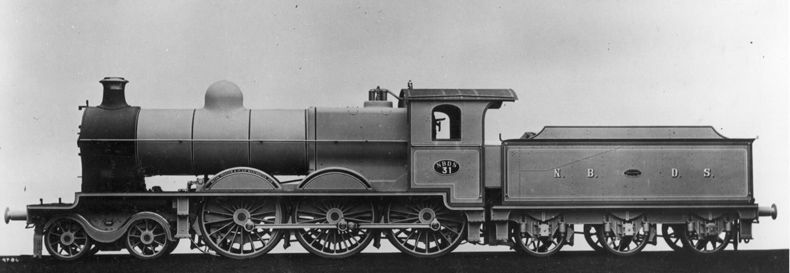
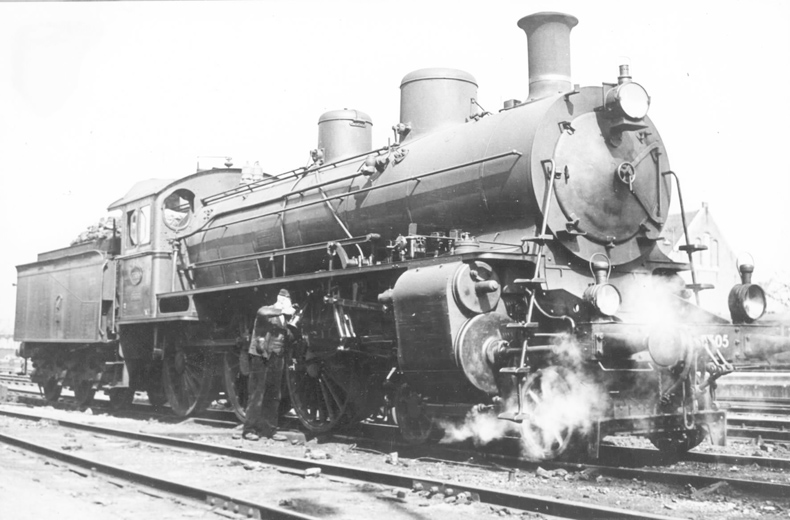
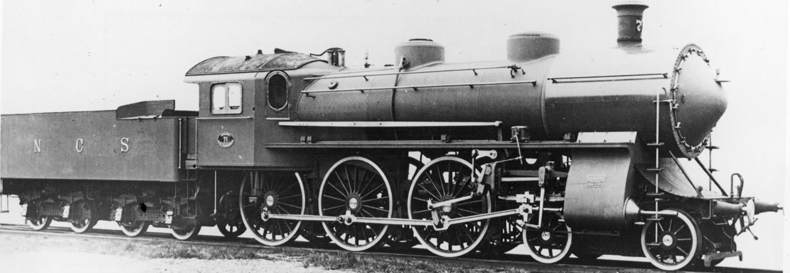
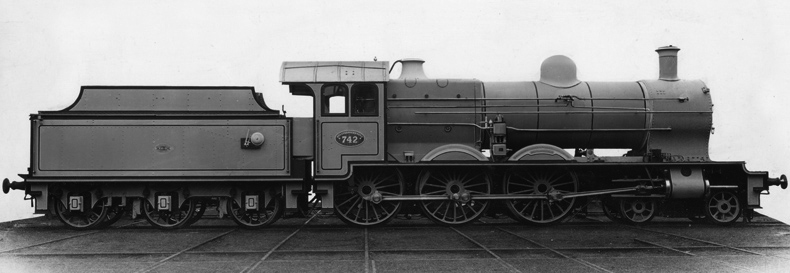
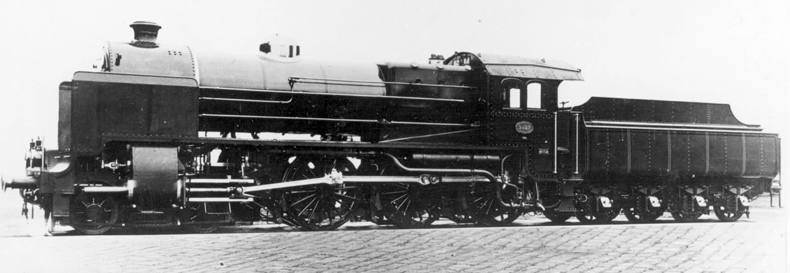
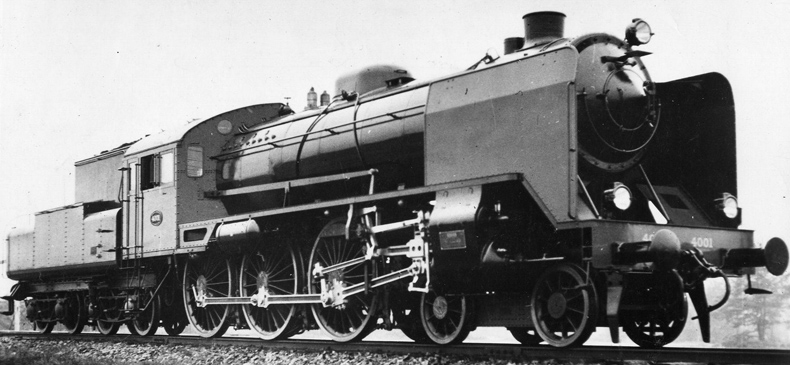
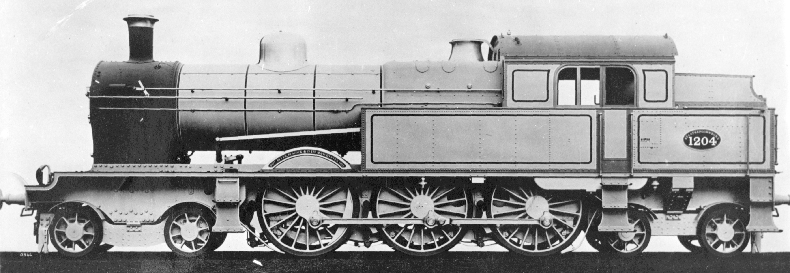
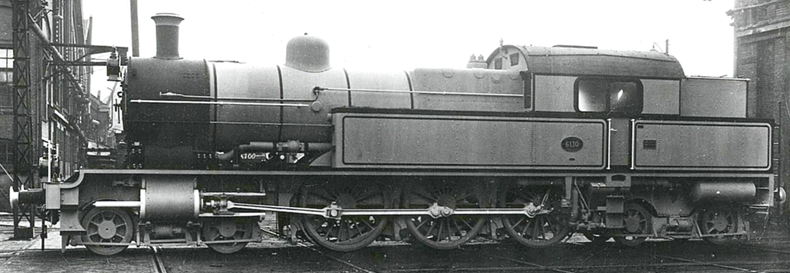
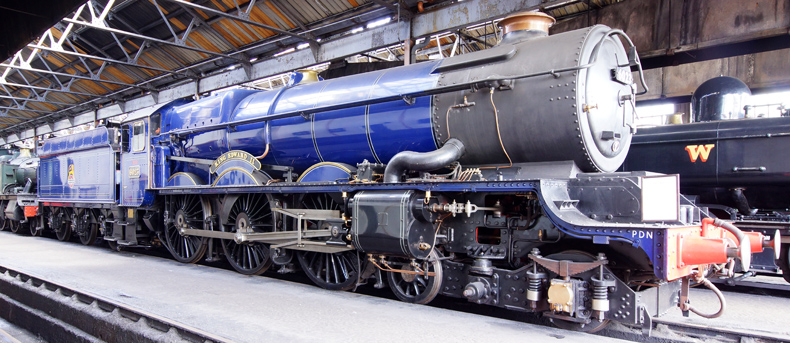
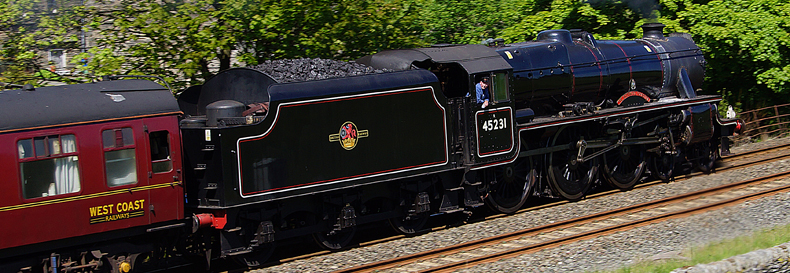
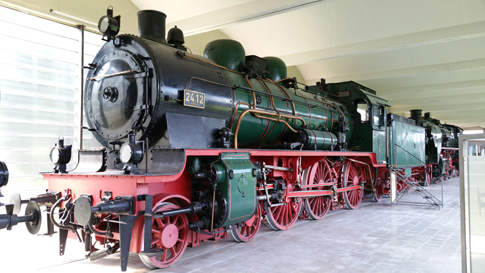

Sign my
GuestBook